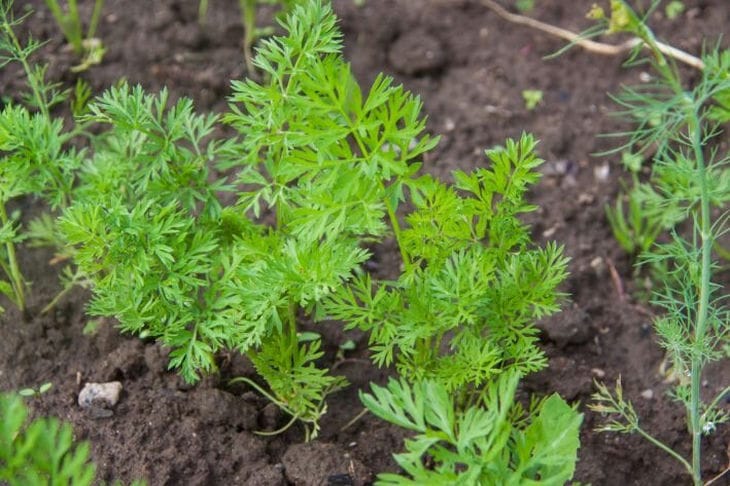Juicy, crunchy carrot roots are a joy to the eye and stomach, but how do you get them to grow really big? It's not enough to just throw seeds in the ground. A whole range of measures is needed.
Preparing the soil
You need to start with preparing the beds. Carrots prefer loose, fertile soils with good water and air permeability. Heavy, clay soils prevent normal development of root crops, making them short and crooked.
Before sowing, dig the soil thoroughly, add compost or humus, and add sand to improve drainage. Avoid adding fresh manure, as it can provoke the growth of tops to the detriment of root crops.

Selecting a variety
Different varieties of carrots have different yield potential and root size. For large vegetables, choose varieties that have been specially bred for this purpose.
Pay attention to mid-season and late-season varieties, as they have a longer growing season and, therefore, have time to grow more mass.
Correct sowing
Sowing depth plays an important role. Carrot seeds should be sown shallowly, about 1-2 centimeters, in well-moistened soil.
Maintain optimal spacing between rows and between plants to ensure each carrot has enough room to grow.
Dense plantings lead to root crops competing for resources and growing small and thin. After the seedlings appear, it is necessary to thin out the crops, leaving only the strongest plants.
Regular watering
Carrots are moisture-loving plants, especially during the period of intensive root growth. It is important to keep the soil moderately moist, but not to allow water stagnation, which can cause rotting.
Watering should be done regularly, but not often, so that the water has time to penetrate to the roots. In hot weather, watering should be more abundant.
Timely feeding
Proper nutrition is the key to a good harvest. During the period of active growth, carrots need additional feeding. At the initial stage, nitrogen is important for growing tops, and then, when root crops are formed, the main attention should be paid to phosphorus and potassium. Use complex mineral fertilizers, and do not forget about organic fertilizers, such as ash or grass infusion.
Thinning
Thinning is an important stage of carrot care. When the shoots reach several centimeters, it is necessary to thin the plantings, removing weak and damaged plants.
Leave enough space between plants so that they do not interfere with each other's growth. If you do not do this, the roots will grow small and crooked.
Protection from pests and diseases
Carrots are susceptible to attacks from pests such as carrot fly and various diseases. It is necessary to inspect the plants regularly and take measures at the first signs of infestation.
Use biological products or other means of protection suitable for vegetable crops.
Loosening the soil
Regular loosening of the soil between the rows promotes air access to the roots and prevents the formation of a soil crust, which interferes with the normal development of carrots. The soil should be loosened carefully, trying not to damage the root crops.
Timely harvesting
Do not rush to harvest carrots. Give the roots time to fully form and gain weight. The harvest period depends on the variety and weather conditions. Focus on the appearance of the tops and the size of the roots.

